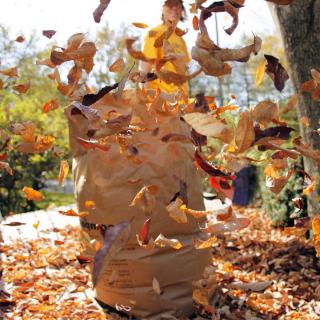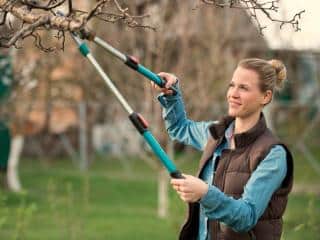

Harvesting, raking, sowing, planting… A summary of the work to get done in the garden in Fall before winter sets in.
Read also:
The clock is ticking for the last harvests of many fruits and vegetables. The word “abundance” describes the fact of having far to much than you can eat immediately: get the kitchen ready for jams, preserves, sauces, jars… or pack it all up in the freezer! Root vegetables and leaf vegetables can spend winter out in the ground without rooting them out, but it’s important to gather pears, apples, potatoes and squashes in a room that is dry, cool and doesn’t freeze over.
Soil in newly vacant growing beds can be broken up before winter with a manual broadfork. Add manure or compost and sow green manure or at least cover with leaf mulch. What counts here is to ensure the soil stays covered so that nutrients don’t get washed away with rain runoff. Cover also reduces weed growth.
If you plan to rely on your garden vegetables for winter, now is the time to sow winter lettuce, turnips, cabbage, leek… and plant strawberry plants for them to root over the cold months. They’ll be ready for fruit-bearing in summer.

In the flower beds, fall is when to prune your roses and plant new ones. It’s also appropriate to bury spring bulbs and sow biennials and several types of annuals such as pansies, papaver poppies and nigella.
Before the first winter frosts set on, you’ll have to bring your garden boxes and containers inside or protect them, especially those that fear the cold. Pelargoniums and summer flowering bulbs can be stored in the cellar. Mediterranean or tropical plants (bougainvillea, oleander, olive trees, citrus, cactus, etc.) must overwinter in a location that doesn’t freeze over but still gets some light through a window.
Finally, plants are entering their dormant phase. Now is the time to transplant shrubs that aren’t doing well. Timing is important for plants vulnerable to transplant shock.

If your trees show signs of disease, apply a preventive spraying of Bordeaux mixture just after the leaves have dropped off. Repeat this step in spring just before the first buds appear.
Laure Hamann
Remember to take a few breathers! Hustling around without resting will tire you out. Harvest the fruits of your work for the mind, too: take time to contemplate nature in the garden.